By Melissa Nase, Manager of Land Stewardship
Welcome to our new mobile Field Guides! We’ll regularly post guides about what’s blooming, what animals you can see, and other interesting things to observe in the woods, meadows, and streams. These posts are designed to be easy to read on a phone, meaning you can take this mobile field guide out with you as you walk, hike, and play. See other Field Guide posts here.
Common yarrow – Achillea millefolium
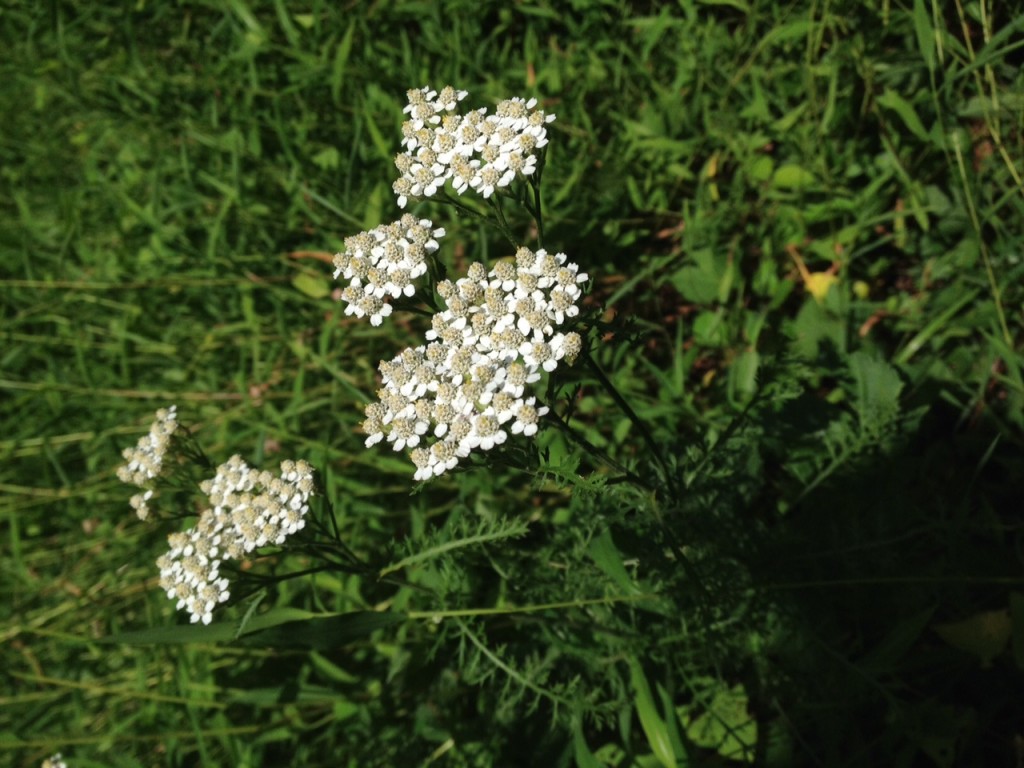
With small white flowers and feathery, delicate leaves, Common Yarrow (Achillea millefolium) is a pretty addition to the meadows and sunny edges at the Schuylkill Center. While is it debated whether yarrow is native to this region or introduced from Europe, this plant has medicinal properties, attracts pollinators, and is an important permaculture plant. In permaculture, yarrow can be found in fruit tree guilds, because they are a nutrient accumulator: their roots draw nutrients from deep within the soil and deposit them on the surface as they die back, benefiting the surrounding plants. Similarly, in the garden, it may be used as a nutrient-rich green compost, slashed and left to decompose after blooming. With all of its great properties, yarrow can be somewhat of a bully in the garden, with a rhizomatous, spreading habit which can quickly take over unoccupied patches of soil.
New York ironweed – Vernonia noveboracensis
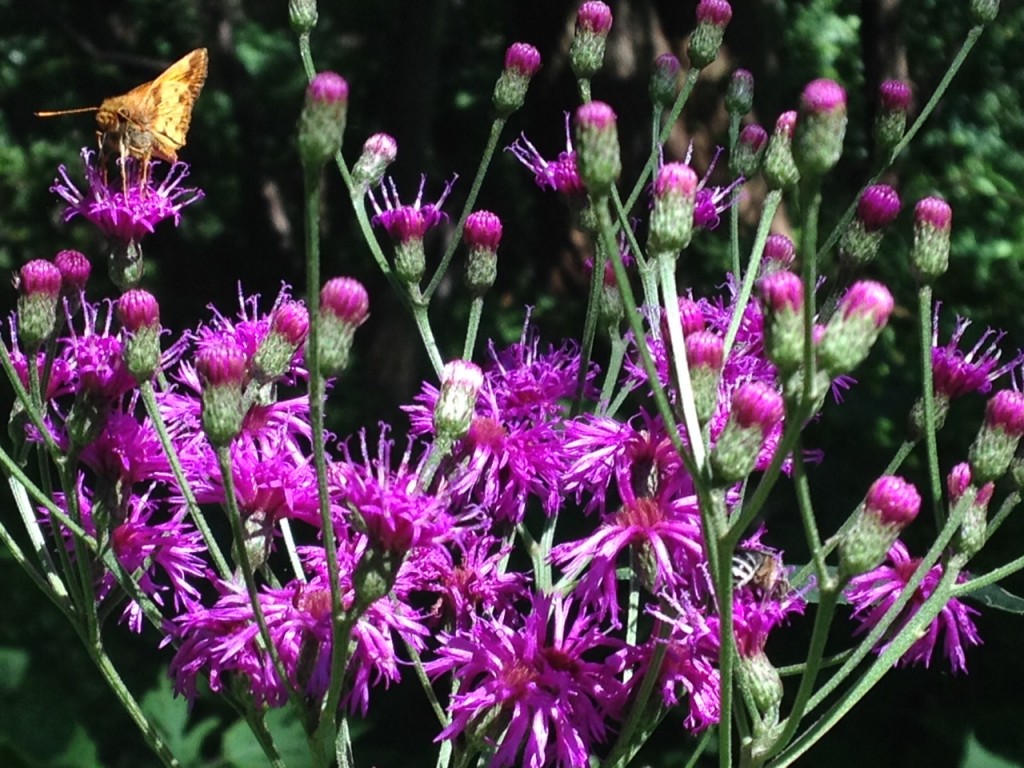
New York ironweed (Vernonia noveboracensis) adds a vibrant magenta to the landscape during late summer. You can find it in meadows and woodland edges throughout the property, although it prefers wetter conditions ideally, where it can grow up to eight feet tall. An attractor of butterflies and pollinators, there is always plenty of activity around this plant. In particular, skippers are consistently seen nectaring on this species.
Black-eyed Susan – Rudbeckia triloba
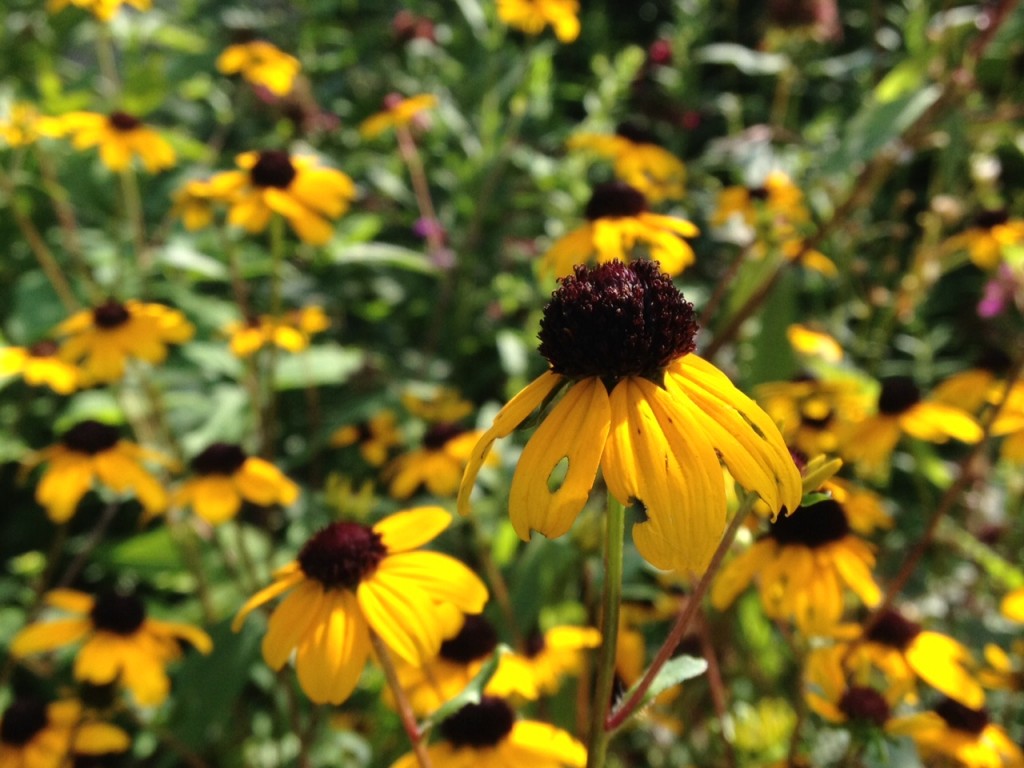
Named for its three-lobed lower leaves, this sweet flower is found in sunny open meadows and along roadsides. It is distinguishable among other forms of black-eyed Susans due to its shorter, rounded petals, and branched stems. While it loves sun, it is also highly adaptable to part shade conditions making it a good option for the garden.
Rose mallow – Hibiscus moscheutos
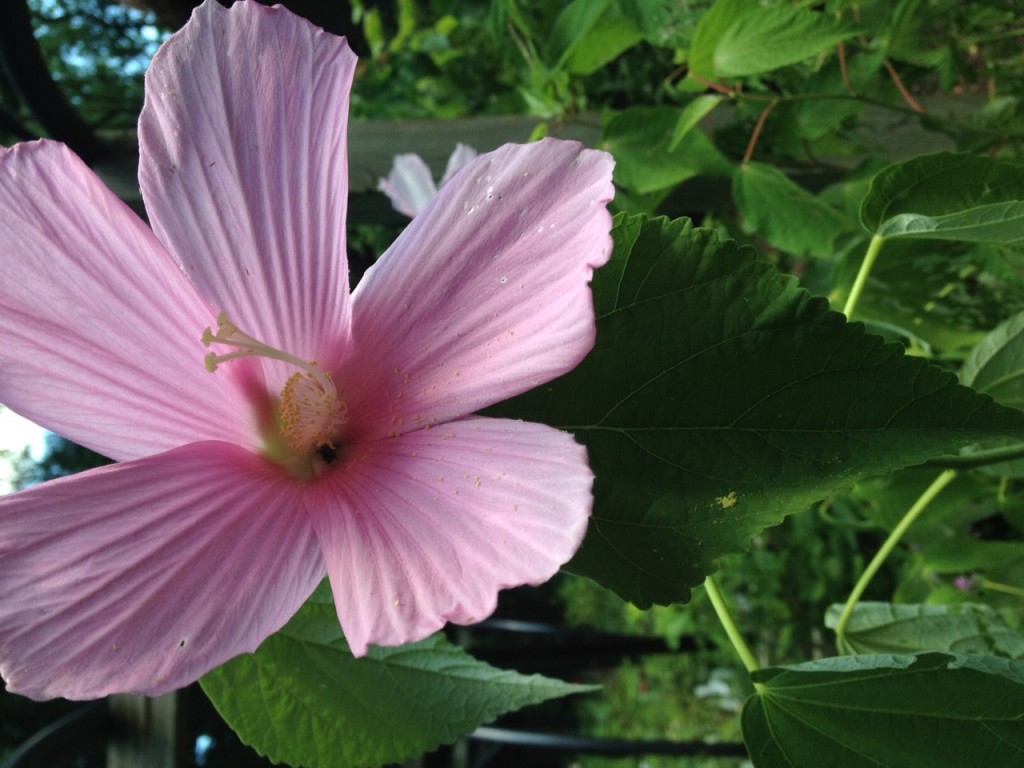
It’s hard to believe this tropical-looking plant is a PA native! Rose mallow (Hibiscus moscheutos) is a fast-growing, water-loving native wildflower found in wet areas like along pond, stream, and river edges. The flower ranges from white with a crimson eye, to the light pink seen here, making it a popular choice among hummingbirds. With a long bloom time and showy flower, rose mallow would be a great addition to rain gardens or other soggy areas of your garden.
Mountain mint – Pycnanthenum muticum
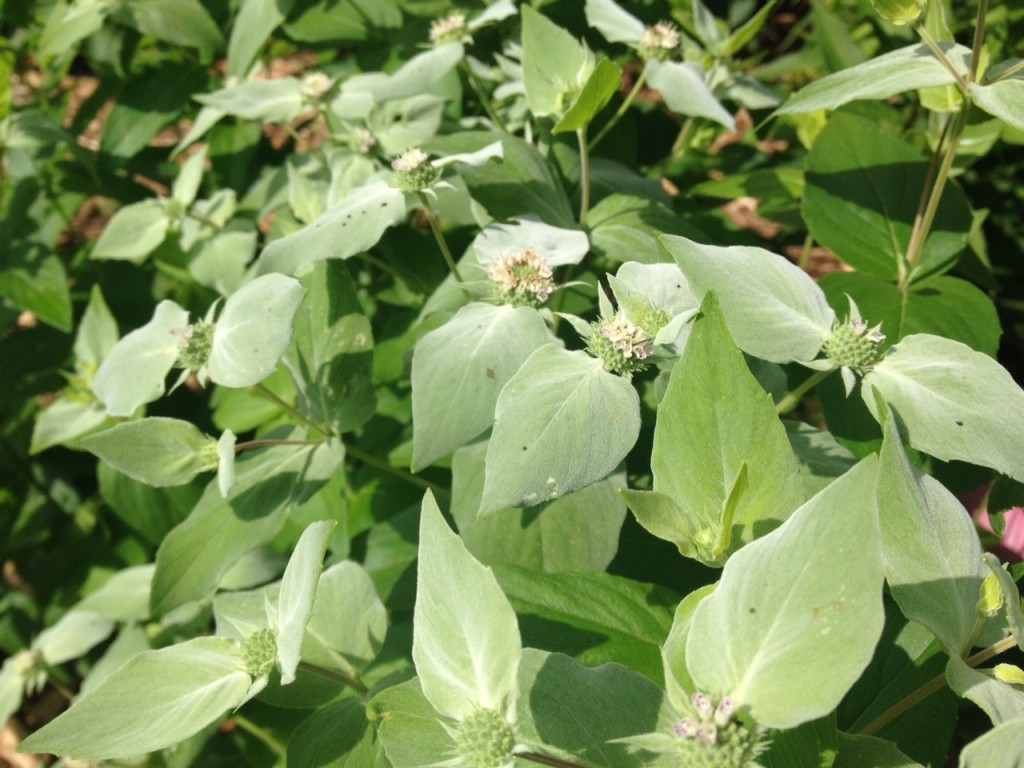
Several types of mountain mint live in our meadows and gardens at the Schuylkill Center. This one is known as short-toothed mountain mint and has much broader leaves than other varieties. Although the flower is rather insignificant on this plant, it is a favorite among butterflies and bees. I see more activity around this plant, than just about any other in the nursery. It has a nice, light minty scent and leaves that turn a silvery green in mid-summer. In the garden, it forms dense clusters and may spread by its rhizomes – it is a mint, after all – but stops just short of becoming invasive.
